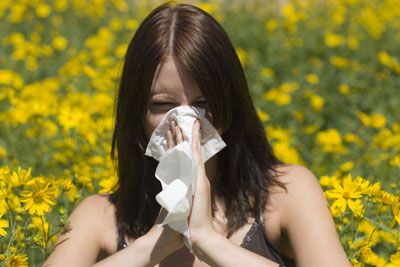Mold thrives at room temperature, making your house the perfect habitat for it to grow. Mold consists of tiny fungi, and -- dead or alive -- they are allergens that can impact on the health of your family. Mold lives wherever there is moisture and oxygen, making your closets, refrigerator drip trays, air conditioners, garbage pails, mattresses, pillows, attics, carpets, and upholstery perfect environments for mold to flourish. Mold will often originate in basements and then spread to the rest of the house. Air currents and movement will carry mold to the kitchen, bathrooms and anywhere else where a combination of food and moisture can be found.
Mold can trigger a range of allergy symptoms, including sneezing, a runny and stuffy nose, coughing, headaches, impaired hearing (when Eustachian tubes are affected), and post nasal drip. While they don't induce traditional pollen allergy symptoms like itchy eyes and nose, they do cause the mucous membranes in the nose and sinuses to become inflamed.
Advertisement
Alternaria and cladosporium are the most common allergy-causing molds, the effects of which can range from mild allergic rhinitis to asthma and even bronchitis. Bronchitis is the inflammation of the air passages leading to the lungs. Black mold, also known as toxic black mold, is associated with the mold known as Stachybotrys chartarum that is found in extreme cases of water-soaked areas in buildings, such as in the roof, ceiling, walls, and paneling. The Center for Disease Control has linked this kind of mold to a range of lung disorders, including chronic and acute bronchitis, and even death.
The elderly, infants, young children, smokers, and people with respiratory or heart conditions are particularly susceptible to the impact of mold. The best way to combat the health effects of mold is by keeping home and work environments clean, dry, and well ventilated.
Advertisement


